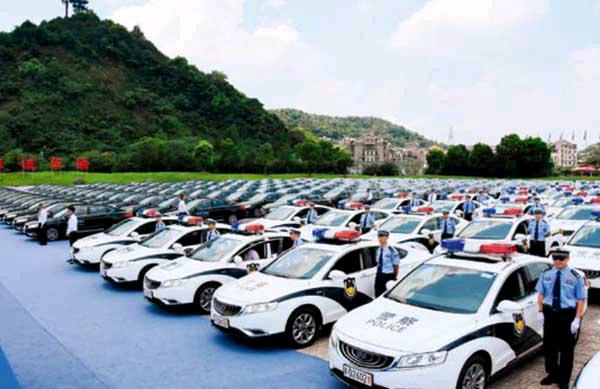Hangzhou: Let’s Go!
2016-09-26byNancyGong
by+Nancy+Gong
Time in the countdown to the 2016 G20 Summit is running thin. Is Hangzhou, the host, ready? How are preparations coming along?
China Pictorial decided to take a look.
Environment
On August 4, 2016, Zhao Yide, Secretary of the CPC Hangzhou Municipal Committee, declared at the local governments month-long countdown campaign that the city had completed 605 refurbishing projects in six categories to improve the environment, including 33 projects to upgrade the city entrances, 264 to beautify streets, removal of 10 million square meters of illegal buildings, and the reconstruction of over 9 million square meters of old housing and factory buildings in urban areas.
To guarantee good air quality during the G20 Summit, the municipal government of Hangzhou has invested heavily in atmospheric environmental control measures including strict supervision and control of coal burning, industrial emissions, vehicle exhaust and construction dust. To hopes of inspiring greater discussion of green transportation at the G20, the local government also introduced 22,000 new-energy automobiles and 500 purely electric buses.
Venue
At an August 15 press conference for the Hangzhou G20 Summit held by Chinas Ministry of Foreign Affairs, Zhao Yide announced that the main venue for the 11th Summit of the G20 Leaders Summit would be Hangzhou International Expo Center, and that the Business 20 Summit (B20) would be held at the International Conference Center.
According to Zhao, all venues for the Summit were refurbished, upgraded, and improved based on the original structure, featuring both local and more broadly Chinese characteristics. Spanning 170,000 square meters, Hangzhou International Expo Center is made up of 20 function areas including primary meeting rooms, banquet halls, reception halls, media space, and press release center. Together, they can accommodate 6,000 people.
Hangzhou International Conference Center consists of the main meeting hall, VIP rooms, and the rooms for bilateral meetings.
Separate venues for the Fourth G20 Sherpa Meeting and the G20 Finance and Central Bank Deputies Meeting are also made ready. Accommodations for state leaders, delegates, and media outlets have been arranged as well. By August 15, the majority of delegations had made reservations with hotels.


Conference Logistics
Zhao revealed that the municipal government has recruited and trained more than 1,000 interpreters, correspondents and other staffers to provide on-site services for the Summit. Since December 2015 when volunteer recruitment was first launched, 26,266 people have signed up, 4,000 of whom have been chosen after several rounds of selection. Additionally, a multi-lingual correspondence platform has been arranged especially for foreign guests.
To provide sufficient safe food, a special food storehouse with a floor space of 7,450 square meters has been built for 900 tons of food, which will remain under strict inspection until it reaches plates. Most of the food for the Summit will feature Hangzhou flavors, with hopes of sharing local as well as national culture with guests.
To provide transportation aligning with international practices, a special semi-rental program will be deployed. A total of 900 special cars will be made available for state leaders and delegations.
Moreover, four hospitals have been designated for the potential need of medical services during the Summit.
Security
Hangzhou has enacted specific measures for security, including mobilizing citizen volunteers as patrollers and calling in police officers from nearby cities as additional security deployment. Actual combat drills have been carried out. Plans have been mapped out for a variety of emergencies. Tens of thousands of volunteers have been on duty for months, patrolling streets, scenic spots and residential areas to guarantee security.
Measures have also been strengthened to ensure safety in the citys water, gas, and power supplies, and communication networks. Construction has been completed for 40 backup water and natural gas supply pipelines, in addition to 77 power grids and supply facilities and 120 communication infrastructure projects.